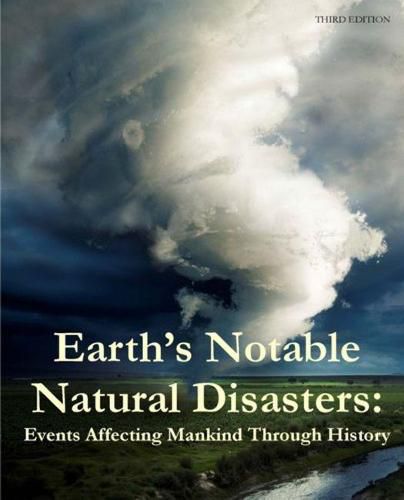Readings Newsletter
Become a Readings Member to make your shopping experience even easier.
Sign in or sign up for free!
You’re not far away from qualifying for FREE standard shipping within Australia
You’ve qualified for FREE standard shipping within Australia
The cart is loading…






This updated edition of Earth’s Notable Natural Disasters: Events Affecting Mankind Through History combines clearly-explained scientific concepts with gripping narrative details about some of the worst disasters in history. Updated through 2016, it provides scientific and narrative analysis on events caused, at least in part, by uncontrollable forces of nature. Disasters covered include Avalanches, Blizzards, Droughts, Dust & Sand Storms, Earthquakes, El Nino, Epidemics, Explosions, Famines, Fires, Floods, Fog, Heat Waves, Hurricanes, Icebergs, Landslides, Lightning Strikes, Meteorites, Smog, Tornadoes, Tsunamis, Volcanic Eruptions and Wind Gusts.
The set begins with disaster overviews by type. Each essay explains the disaster in scientific terms. First, a few sentences define the natural phenomenon and its importance. Then the factors involved (e.g. chemical reactions, ice, wind) and the regions affected (cities, coasts, forests) are listed. Subsections to overviews discuss the science behind the phenomenon lay terms. Sections such as
Prevention and Preparations
and
Rescue and Relief Efforts
further illuminate disasters.
The Disasters
The overviews are followed by entries on the 100 worst disasters in history. These narrative-style essays offer facts, figures, and interesting stories. Each event entry begins with a general description of location or the popular designation for the disaster, plus the most accurate date for the event
Special Features/. A Glossary defines essential meteorological and geological terms, a Bibliography offers sources for more material about natural disasters, a list of Organizations and Agencies provides information about warning and relief efforts. The List of Entries by Category breaks the 100 events into disaster types, and the Geographical Index organizes the events by region, country, or state. A comprehensive subject Index concludes the volume.
$9.00 standard shipping within Australia
FREE standard shipping within Australia for orders over $100.00
Express & International shipping calculated at checkout
This updated edition of Earth’s Notable Natural Disasters: Events Affecting Mankind Through History combines clearly-explained scientific concepts with gripping narrative details about some of the worst disasters in history. Updated through 2016, it provides scientific and narrative analysis on events caused, at least in part, by uncontrollable forces of nature. Disasters covered include Avalanches, Blizzards, Droughts, Dust & Sand Storms, Earthquakes, El Nino, Epidemics, Explosions, Famines, Fires, Floods, Fog, Heat Waves, Hurricanes, Icebergs, Landslides, Lightning Strikes, Meteorites, Smog, Tornadoes, Tsunamis, Volcanic Eruptions and Wind Gusts.
The set begins with disaster overviews by type. Each essay explains the disaster in scientific terms. First, a few sentences define the natural phenomenon and its importance. Then the factors involved (e.g. chemical reactions, ice, wind) and the regions affected (cities, coasts, forests) are listed. Subsections to overviews discuss the science behind the phenomenon lay terms. Sections such as
Prevention and Preparations
and
Rescue and Relief Efforts
further illuminate disasters.
The Disasters
The overviews are followed by entries on the 100 worst disasters in history. These narrative-style essays offer facts, figures, and interesting stories. Each event entry begins with a general description of location or the popular designation for the disaster, plus the most accurate date for the event
Special Features/. A Glossary defines essential meteorological and geological terms, a Bibliography offers sources for more material about natural disasters, a list of Organizations and Agencies provides information about warning and relief efforts. The List of Entries by Category breaks the 100 events into disaster types, and the Geographical Index organizes the events by region, country, or state. A comprehensive subject Index concludes the volume.